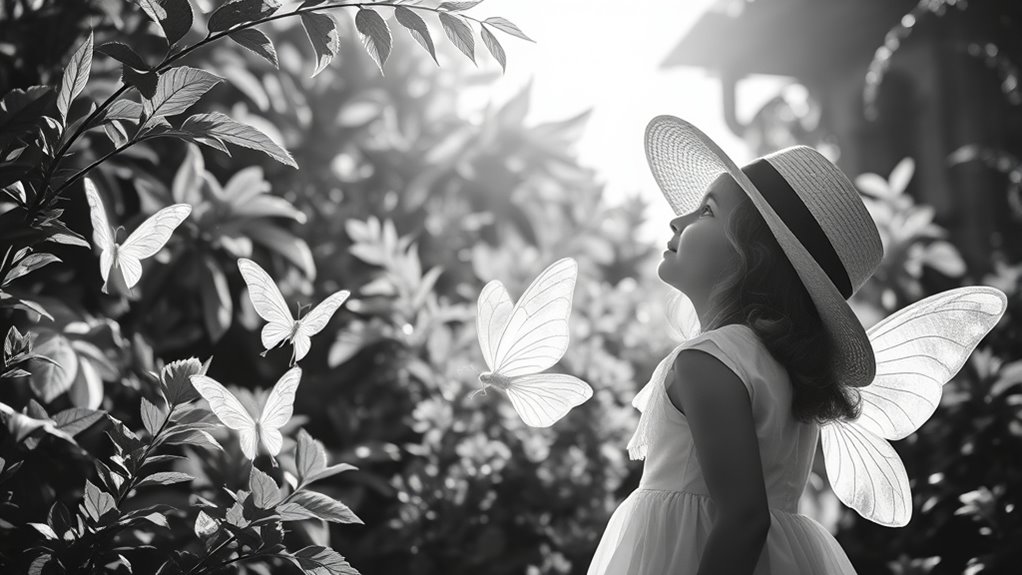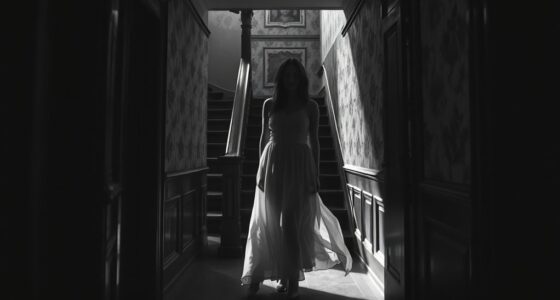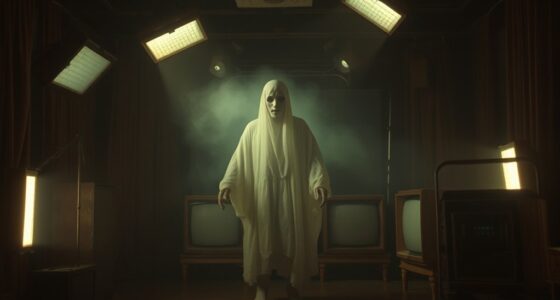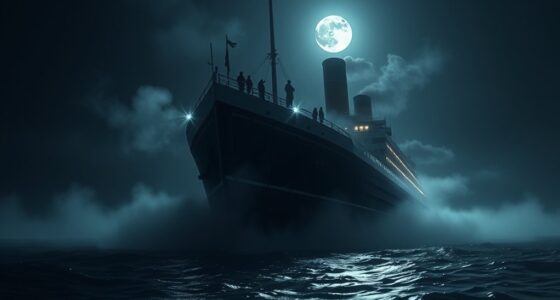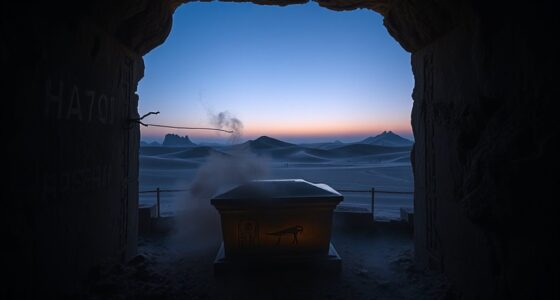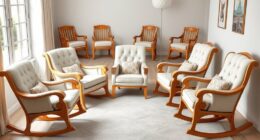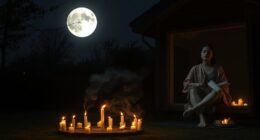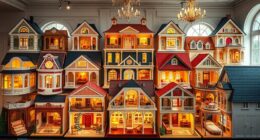In 1917, two girls in Cottingley, England, took photographs claiming they captured fairies in their garden, fooling many with simple tricks like cut-outs and double exposures. These images convinced prominent figures, including Sir Arthur Conan Doyle, to believe in supernatural beings. Eventually, the girls admitted they faked the photos, revealing how easily perception can be manipulated by images. To discover more about this intriguing deception and its lasting impact, keep exploring this enthralling story.
Key Takeaways
- The Cottingley Fairies were a series of photographs taken in 1917 by two girls, claiming to depict real fairies.
- The images used simple techniques like cut-outs and double exposure, making them convincingly appear authentic.
- The photographs gained global attention, notably endorsed by Sir Arthur Conan Doyle, boosting their credibility.
- Eventually, the girls admitted to creating the images as a hoax, revealing the power of visual deception.
- The event highlights the importance of critical thinking in evaluating photographic evidence and the influence of images on culture.
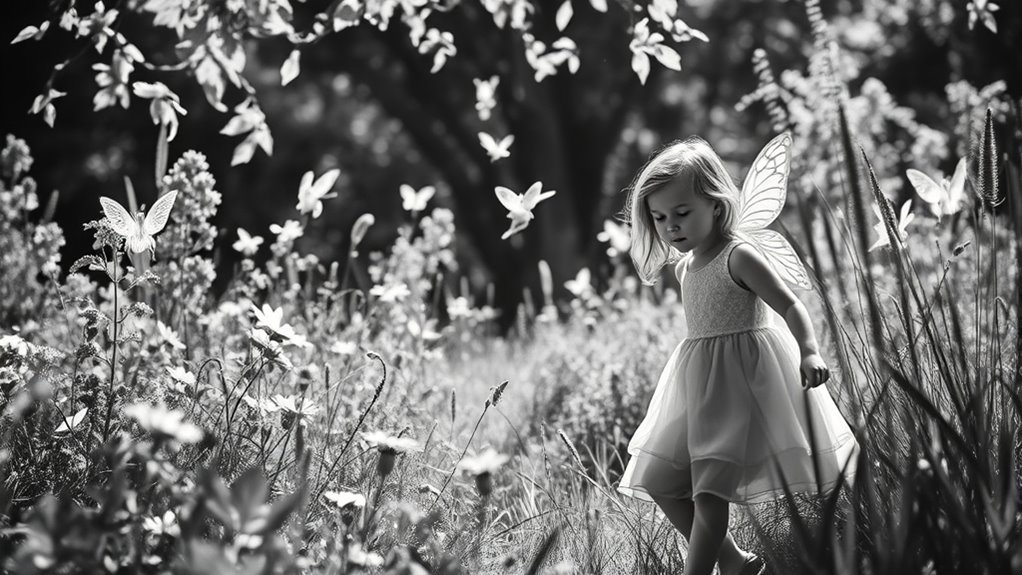
Recently, a series of so-called “fairy photos” have captivated social media, but experts quickly revealed they’re nothing more than clever hoaxes. One of the most famous instances of photographic deception took place over a century ago, involving the Cottingley Fairies. In 1917, two young girls from England claimed to have captured images of fairies in their garden, sparking widespread fascination and debate. At the time, these photographs seemed remarkably convincing, fueling public belief in the existence of fairies and blurring the line between reality and illusion.
A century ago, girls claimed to photograph fairies, fueling belief before exposing the hoax.
The girls, Elsie Wright and Frances Griffiths, used simple photographic techniques, including cut-out paper figures and double exposures, to create their fairy images. To the untrained eye, the photos appeared authentic, and many believed they offered proof of supernatural beings. This event underscores the power of photographic deception—where clever manipulation of images can deceive even the most skeptical viewers. The photographs gained considerable media attention, and prominent figures, including the renowned author Sir Arthur Conan Doyle, publicly endorsed their authenticity. Doyle, a firm believer in spiritualism, saw the images as evidence supporting his views, which amplified their cultural impact.
The Cottingley Fairy photographs didn’t just entertain; they influenced societal perceptions profoundly. They sparked a surge of interest in fairies and the supernatural, inspiring books, plays, and discussions about unseen worlds. For many, these images reinforced cultural narratives about fairy folklore, making the magical seem just a photograph away. Yet, over time, the truth emerged—both girls admitted they had fabricated the images, revealing how easily perception could be manipulated. This case exemplifies how visual storytelling can influence public perception, regardless of its factual accuracy. It also highlights the importance of critical analysis in the face of seemingly convincing visual evidence.
Looking back, the Cottingley Fairies serve as a reminder of the profound cultural impact that photographic deception can have. They show how images, even when proven false, can influence collective imagination and challenge our understanding of reality. Today, with advanced digital editing tools, the potential for creating convincing hoaxes has grown exponentially, but the lesson remains clear: images are powerful, and not everything we see is as it appears. The Cottingley Fairies remind us to question what we view and recognize the enduring influence of visual storytelling on society’s beliefs and myths. Additionally, this event demonstrates how media influence can shape cultural narratives long after the truth is revealed. Recognizing the role of perception in how we interpret images is crucial in an era of easily manipulated digital content.
Frequently Asked Questions
Were the Cottingley Fairies Ever Conclusively Proven Real?
You might wonder if the Cottingley fairies were ever conclusively proven real. Despite many myth debunking efforts, no definitive proof emerged, and most experts agree the photos were hoaxes. Their cultural influence persisted, inspiring stories and debates about belief and skepticism. Ultimately, the photos remain a fascinating example of how myth and deception can shape public perception, even without concrete evidence to confirm the fairies’ existence.
How Did the Hoax Impact Belief in the Supernatural?
Did you know about 60% of people once believed in the supernatural? The hoax increased public skepticism, making many question paranormal influence. It showed how easily people could be convinced by visual proof, even if false, shaking trust in genuine claims. This event highlighted how deception can sway belief systems, encouraging critical thinking and skepticism about supernatural stories, ultimately shaping modern attitudes toward paranormal phenomena.
What Motivated the Girls to Create the Fairy Photographs?
You might find that the girls created the fairy photographs driven by childhood innocence and a desire for peer validation. Their playful curiosity and imagination inspired them to craft these images, hoping to share a magical experience with others. They likely sought approval from friends and family, feeling excited to impress and delight others with their creative, enchanting photos. Their motivation stemmed from a mix of innocence and the thrill of being recognized.
Did Sir Arthur Conan Doyle Ever Admit the Photos Were Fake?
Like a ship sailing through fog, you wonder if Sir Arthur Conan Doyle ever admitted the photos were fake. Despite his belief in their photographic authenticity at first, Doyle was a famous skeptic of such claims, and later, he acknowledged the images were a hoax. He admitted that the photos couldn’t be scientifically verified, showing even the most famous skeptics can be deceived by seemingly authentic evidence.
Are There Any Modern Sightings or Evidence of Cottingley Fairies?
You might wonder if there are modern sightings or digital evidence of Cottingley fairies today. While some enthusiasts claim recent sightings or blurry photos online, credible evidence remains elusive. Most experts consider contemporary claims as hoaxes or misidentifications. You should approach such reports skeptically, understanding that without verified digital evidence or reliable sightings, these claims don’t hold up against historical skepticism surrounding the original Cottingley fairy photographs.
Conclusion
You might be surprised to learn that over 10,000 people visited the Cottingley site during the height of the hoax, enthusiastic to believe in fairies. Despite widespread skepticism, many were convinced by the photos’ charm and the convincing poses. This fascination shows how powerful belief can be, even when evidence suggests deception. Ultimately, the Cottingley fairy photos remind you that sometimes, our desire to believe can overshadow facts, making us see what we want to see.
